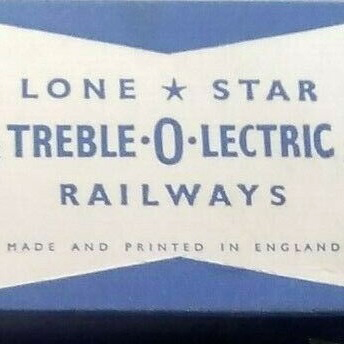This was in N gauge, which was marginally larger than 000. N gauge is scaled at 1∶152, which results in a track gauge of 9.42 mm between the rails, as opposed to the 9mm for 000.
Being electric powered, the zamak railway segments used for 000 was not an option. The track was an alloy which was laid on insulating plastic sleepers. Track pieces were joined by metal fishplates, to complete an electric circuit. Lessons had been learnt from the 000 track, with the Treble-0-Lectric curves being a much wider radius, reducing the risk of derailment.
The motors for driving the locomotives were too large for the existing designs, so new locomotives were selected, with a choice of the English Electric ‘Baby Deltic’ Class 23 or the Derby Sulzer Class 24 diesel locomotives chosen instead of the steam locomotives. These were painted in British Railways green livery, with stencilled numbers and lining.
Another key difference was that all rolling stock came with hook and eye couplings, used in most model railway designs, as opposed to the loop and pin used in 000.

With so little difference in the size of the scale, the same moulds were used for the rest of the rolling stock. However, there were small differences between the 000 and the Treble-0-Lectric versions.
The BR Main Line Coach was improved, with a Perspex window piece slotted inside. They came in either BR crimson or Southern green liveries, with additional stencilled detail on the side, such as coach number and passenger class.
Wagons were often finished in a different colour schemes.
The packaging names were all prefixed EL, e.g. EL80 for the Brake van. A detailed catalogue of the range can be found at [the not secure website of] Irwins Journal







